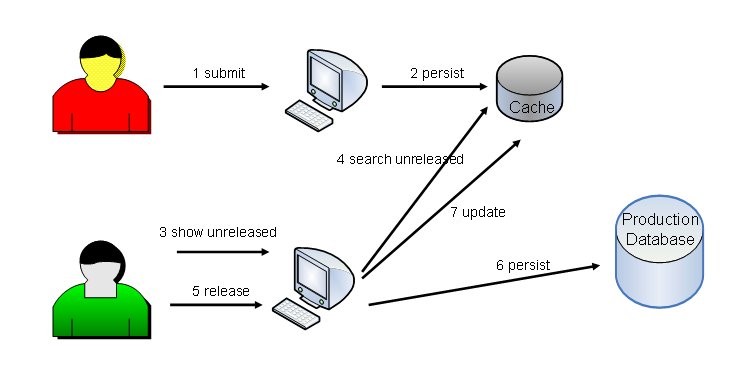Overview
Trust is good, control is better. While it may not be a good idea to apply this proverb against your partner in love there are areas in life where you should. For example the modification of highly critical business data by an application user is subject to human failure. Typos, wrong customer number by mistake, lack of information, there are numerous possibilities why users unintentionally make mistakes. In such cases control is better. The Cibet framework helps to control the execution of important business processes. To control an application in the sense of Cibet is not meant on a security level but on the reliance and trustfulness level.
Cibet is not only the acronym for control is better, cibet (from the Arab word zabad) or civet is also a distinctive secretion from the anal glands of the civet cat. In the natural state this is a substance with a penetrating foul-smelling odor. In a highly diluted state however, it develops a pleasant, musk-like fragrant flavour which is used in perfume manufacturing.
This describes exactly the position of control and the Cibet framework in an application. If you apply too much control it stinks: The application developer gets frustrated when he has to spend his time in applying control and security mechanisms instead of implementing business processes. The application user of such an application will have a feeling of "Big brother is watching you" and will got nerved and frustrated when he has to take care of complicated control mechanisms while executing business processes. Control in the right proportion and with an appropriate tool like Cibet however doesn't distract the developer from business process implementation and lets the application user feel safe, comfortable and well guarded in his operations because he is sure that his actions can do no harm and his data could not get lost or compromised.
What are now important business processes which should be controlled?
Of cause every domain has its own important business processes but in a general point of view there may exist some typical processes which could be subject of control:
- creation of new domain objects
- modification of data
- deletion of data
- calling a service
- executing a business case
How could Cibet control important business processes?
A simple procedure is to log the event so that at a later time it could be proofed which person did what action. This kind of logging is different from normal trace logging and is called audit-proof logging. A revision or audit of your business processes can exactly follow up any change in state of business objects or execution of sensible and important business processes. It can be proofed which user initiated a state change at what time. The state of business processes and domain objects can be reconstructed at any point in time.
Another method to control business processes is the dual control or four-eyes principle:

A business process, let's say the creation of a new customer account is initiated by one user. For this user there is no difference in the process whether the creation of a customer account is under dual control or not, however, in dual control mode, the new customer account is temporary and not active and usable in other business processes. It is not yet visible in the production database. A second user must approve the new customer account and release it before the account will get productive. If the second user rejects the new customer account for any reason, the temporary account will not go productive and is removed.
Some highly critical business processes may also be controlled by a six-eyes process. In this case a third user must release the business process before it becomes productive.
Principles of Cibet framework
Above all we commit ourselves to some principles of software development. All features and developments are subdued and must conform to these principles as much as possible. These principles are:
- integrate non-intrusively
Cibet should be integrated into an application as non-intrusive as possible. We don't want you to make great modifications in your existing code and we don't want to make your solution depend on Cibet. If you find a better solution to fulfill your requirements tomorrow, it should be easy to get rid of Cibet.
- keep it simple
Cibet should be easy to use for the developer. That means it should be easy to understand, intuitive and should make use of convention over configuration wherever possible. This principle means also displaying tolerance against developer errors.
- reduce dependencies
Typical Java applications have dependencies to some dozens of third-party libraries especially when a dependency management tool such as Maven is used. Eventually, nobody knows which libraries are really necessary. Cibet tries to make use of as few third-party libraries as possible.
- design modular
The major concepts of Cibet like sensors, actuators and controls are built as modular independent components. This allows to follow the last principle of reducing dependencies: Only the dependent libraries of those components must be integrated that you really use.
- design customizable
Cibet is a framework or platform for your own control solutions. Therefore all major concepts are designed customizable.


